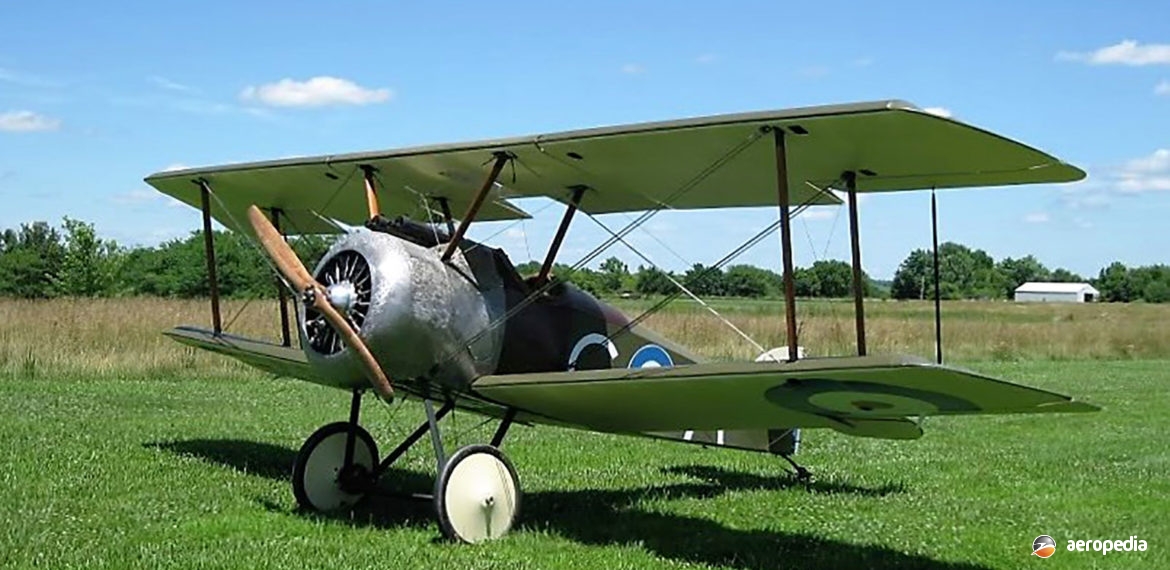Photograph:
An Airdrome Aeroplanes Sopwith Camel replica in Queensland (Author’s collection)
Country of origin:
United States of America
Description:
Single-seat light sport biplane
Power Plant:
One 112 kw (150 hp) Rotec 3600 nine-cylinder, four-stroke air-cooled eadial engine
Specifications:
- Wingspan: 8 m (26 ft 2 in)
- Wing area: 18.1 m² (195 sq ft)
- Cruising speed: 137 km/h (85 mph)
- Stalling speed: 64 km/h (40 mph)
- Rate of climb: 206 m/min (675 ft/min)
- Range: 322 km (518 miles)
- Fuel capacity: 68 litres (15 Imp gals)
- Empty weight: 428 kg (943 lb)
- Loaded weight: 564 kg (1,243 lb)
History:
The Airdrome Aeroplanes Sopwith Camel was a full-scale replica of the World War I fighter designed by Robert Baslee and marketed by his Company, Airdrome Aeroplanes of Holden in Missouri, USA. It was a strut-braced biplane with a single-seat cockpit and a fixed conventional tailwheel undercarriage. It was constructed of 4130 steel tube with fabric covering and was powered by the Australian-built Rotec 3600 radial engine, although one example completed in the United States was fitted with a Rotec 2800 radial engine. The latter was one of the first completed and was demonstrated at the 2010 Experimental Aircraft Association event at Oshkosh, Wisconsin. The Camel with the Rotec 3600 engine was first seen at Oshkosh in 2012. Although the aircraft looked like the original Camel, the kitplane has been built with modern materials and used a radial engine rather than a rotary.
With the interest in recent years in World War I aircraft, and the successful completion of a number of exact reproductions in New Zealand by The Vintage Aviator Limited, at Masterton, a number of full scale and 75 per cent scale replicas of World War I aircraft have been constructed in New Zealand and Australia, a Sopwith Camel being completed and flown at Watts Bridge in Queensland.

